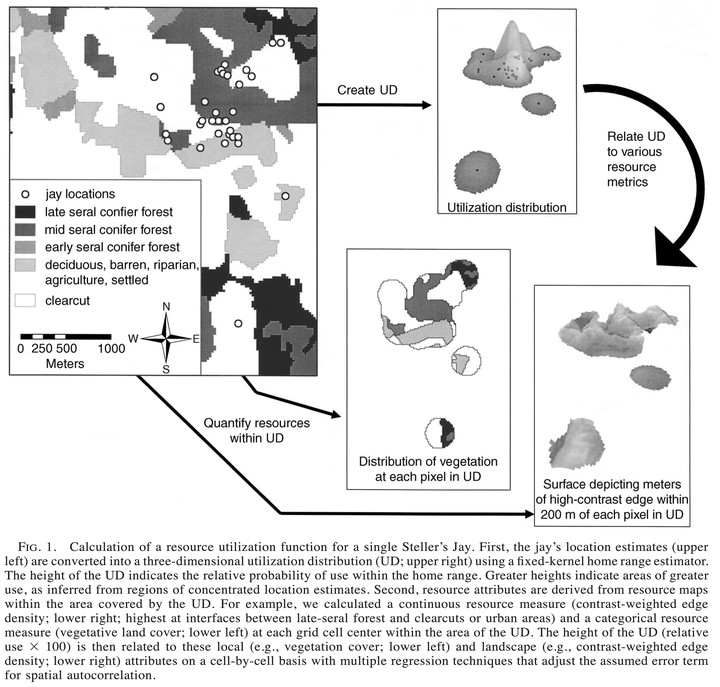Relating Resources to a Probabilistic Measure of Space Use: Forest Fragments and Steller’s Jays

Abstract
Many analytical techniques that assess resource selection focus on individual relocation points as the sample unit and classify resources as either used or available. Commonly, the relative use of each resource is quantified as the number of observations in each resource class or the proportional occurrence of a resource within a home range. We believe that a more accurate estimate can be summarized by a utilization distribution (UD). We present an analytical approach that explicitly incorporates a probabilistic measure of use, as defined by the UD. We used animal relocation points and fixed-kernel techniques to determine a UD within a home range. We related this probabilistic measure of use to categorical and continuous resource variables using multiple regression. Regression errors accounted for spatial autocorrelation so that the significance of regression coefficients could be appraised for each animal and averaged across animals. This allowed us to quantify the individualistic nature of resource selection and test for consistency in use of resources by a population. Sample sizes in population assessments correctly reflected the individual animal as the experimental unit. We used this technique in a geographic information system setting to examine the importance of local-scale (forest cover) and landscape-scale (degree of fragmentation, proximity to edges and human use areas) attributes to breeding season habitat selection by 25 radio-tagged Steller’s Jays (Cyanocitta stelleri) in western Washington State, USA. Individual jays varied significantly in habitat use, but most (20) concentrated their use in areas with many vegetation patches or in areas with extensive edge between forest and nonforested land cover. This confirmed our prediction that jays prefer fragmented habitat and forest edges and helped to explain why jays are most abundant in fragmented landscapes. However, we refined our understanding of why they used such habitats by demonstrating that landscape attributes affected use of local habitat features: high-contrast edges were used most if they were associated with small human settlements and campgrounds. Use of patchy and edgy areas within home ranges may be reinforced by natural selection because jays that inhabited areas with complex-shaped patches and concentrated their activity in such areas were most likely to fledge young. Concentration of use along forest–human land use interfaces may explain the greater risk of nest predation to other birds in such settings.